Posted by: Northwest Eye in General on October 1, 2025
Overview
This article addresses essential cataract treatments designed to ensure a smooth recovery for patients. We understand that considering surgery can be daunting, which is why we emphasize advanced surgical techniques and personalized lens options that cater to your unique needs.
Innovative methods, such as femtosecond laser-assisted cataract surgery and Light Adjustable Lenses, are highlighted for their ability to enhance surgical precision and improve visual outcomes. These advancements ultimately lead to higher patient satisfaction and quicker recovery times, helping you feel more at ease during your healing journey.
Introduction
Cataract surgery represents a significant step towards reclaiming clear vision, yet we understand that the journey to recovery can often feel overwhelming. With numerous treatment options and advanced techniques available, you have a unique opportunity to enhance your visual outcomes and improve your overall quality of life.
However, it’s common to feel uncertain when navigating the complexities of post-operative care and understanding potential risks. What essential steps can you take to ensure a smooth recovery while maximizing the benefits of your chosen cataract treatments?
We are here to help you through this process.
Northwest Eye: Advanced Cataract Surgery Techniques
At Northwest Eye, we understand that considering can be a , and we are here to help you through this process. Our state-of-the-art techniques, including (FLACS) and (LAL), are integral to our designed with your needs in mind. FLACS enhances surgical precision, which results in a lower complication rate of just 1.8% compared to 5.8% for conventional methods. This innovative approach not only reduces ultrasound energy usage but also leads to and improved visual outcomes.
The Light Adjustable Lens offers a unique advantage—it can be modified after surgery to provide a that suits your personal lifestyle and preferences. Many patients report significant improvements in visual clarity, and studies indicate that those with LAL are nearly twice as likely to achieve 20/20 vision without glasses compared to standard monofocal lenses. This lens technology, made from photosensitive materials, can be fine-tuned using targeted UV light treatments, ensuring optimal visual outcomes tailored just for you.
Our dedicated cataract surgeons collaborate closely with you to identify the best lens option based on your specific needs and the latest cataract treatments. The LAL package includes advanced diagnostic testing and several light adjustment sessions, allowing you to test your preferred focal point correction before confirming your prescription. This collaborative approach highlights the importance of , ensuring that you receive care that is truly tailored to you. As one of our specialists shared, “Light adjustable artificial lenses are distinctive because are arranged following the procedure to modify the new artificial lens.” This flexibility not only enhances your satisfaction but also contributes to better overall results.
With a commitment to utilizing the , Northwest Eye guarantees that you will receive the utmost standard of care, customized to your unique requirements. We understand that each journey is personal, and we are here to support you every step of the way.
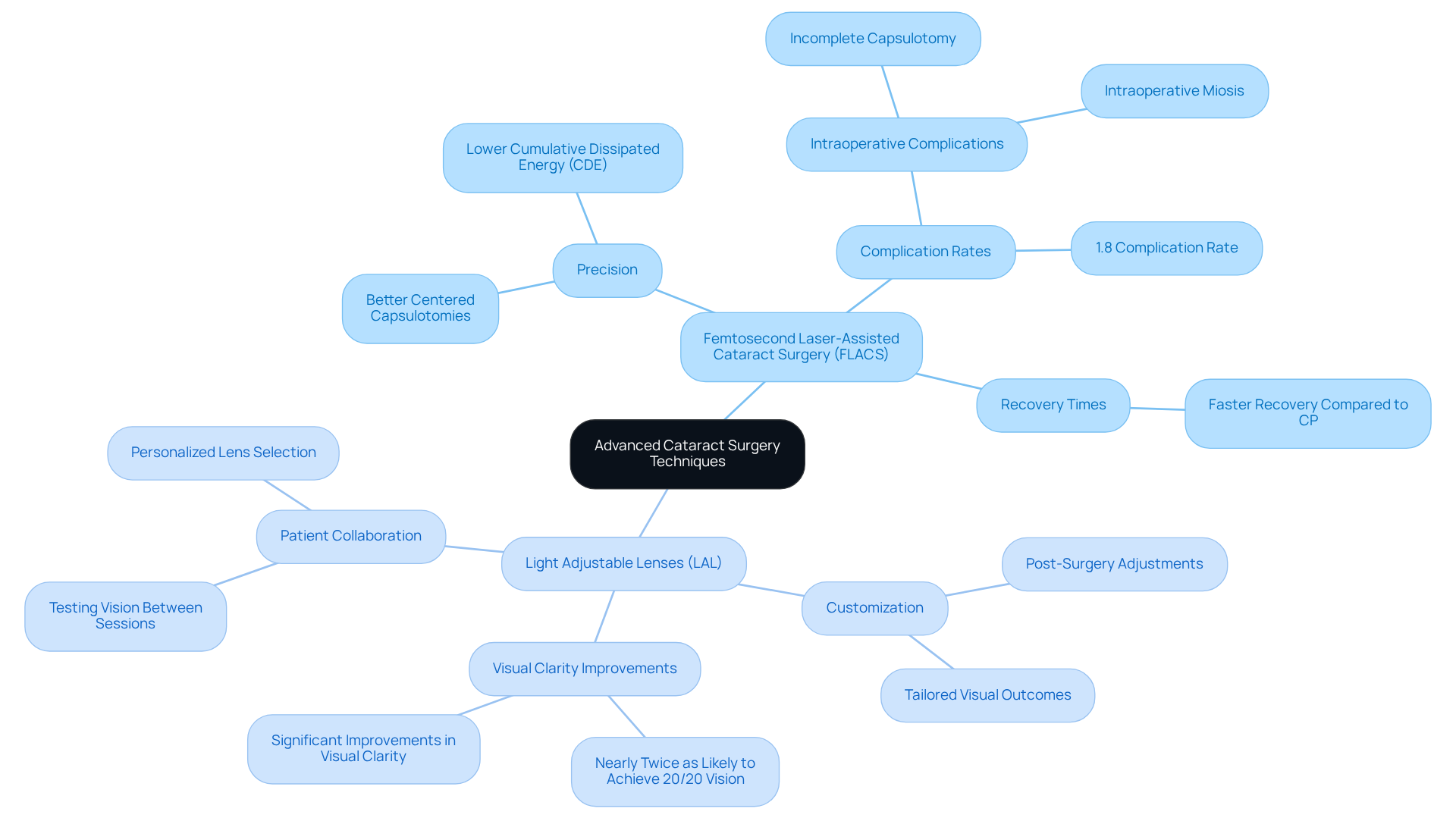
Laser-Assisted Cataract Surgery: Precision and Recovery Benefits
We understand that considering can be a significant decision. Laser-assisted employs cutting-edge laser technology to make precise incisions and fragment the cataract, minimizing trauma to your eye. This innovative method significantly improves , with many individuals reporting clearer vision within just days.
It’s common to feel anxious about the procedure, but studies indicate that patients often resume , with . Testimonials from others who have undergone this surgery frequently highlight their swift return to daily routines and the .
The integration of not only reduces discomfort but also leads to superior visual outcomes, making it a preferred choice for cataract treatments. At Northwest Eye, we are here to help you explore various lens options tailored to your needs, including:
- Single Distance Astigmatism Package
- Presbyopia Package
Furthermore, the innovative (LAL) package enables tailored correction that can be fine-tuned post-surgery, ensuring optimal visual results. While the procedure is generally safe, we acknowledge that, like any surgery, there are , although these are rare with modern techniques. Remember, we are here to support you through this process and answer any questions you may have.
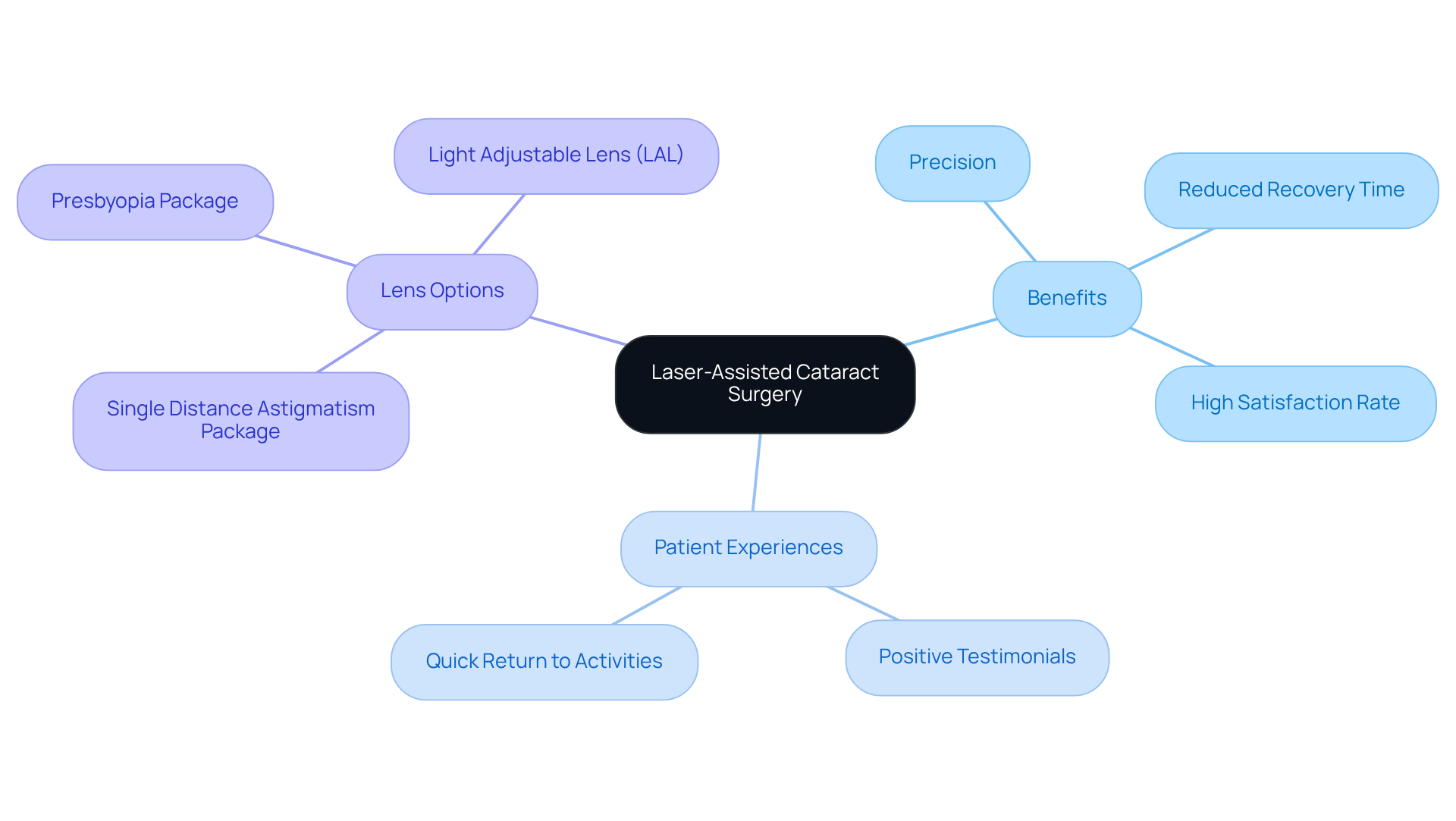
Premium Intraocular Lenses (IOLs): Enhancing Vision After Surgery
Premium intraocular lenses (IOLs) can significantly enhance your vision, especially in the context of . We understand that choosing the right lens can feel overwhelming, but are designed to provide sharp clarity at various distances. Many individuals have reported high with these lenses. In fact, studies show that 92% of patients with achieved uncorrected distance of 20/40 or better just six months after surgery. In comparison, 97% of those who opted for monofocal lenses experienced similar outcomes. Moreover, 80% of individuals in the Toric/multifocal group expressed great satisfaction with their near vision, a stark contrast to only 25.5% in the Toric/monofocal group.
If you have astigmatism, could be an excellent choice for you. Patients who received toric multifocal IOLs not only improved their visual acuity but also enjoyed greater independence from glasses. This means that these lenses effectively address astigmatism while offering the multifocal benefits you may be seeking. Research indicates that 73% of individuals with the combination of toric and multifocal IOLs did not need glasses for near activities, providing a sense of freedom and convenience.
At Northwest Eye, we encourage you to share your lifestyle needs with our . This personalized approach ensures you select the most suitable IOL for your unique situation. We want to guarantee the best possible visual results after surgery, allowing you to enjoy an with . The growing body of evidence supports the use of in cataract treatments, emphasizing their significant benefits in enhancing vision and overall satisfaction. Remember, we are here to help you through this process.
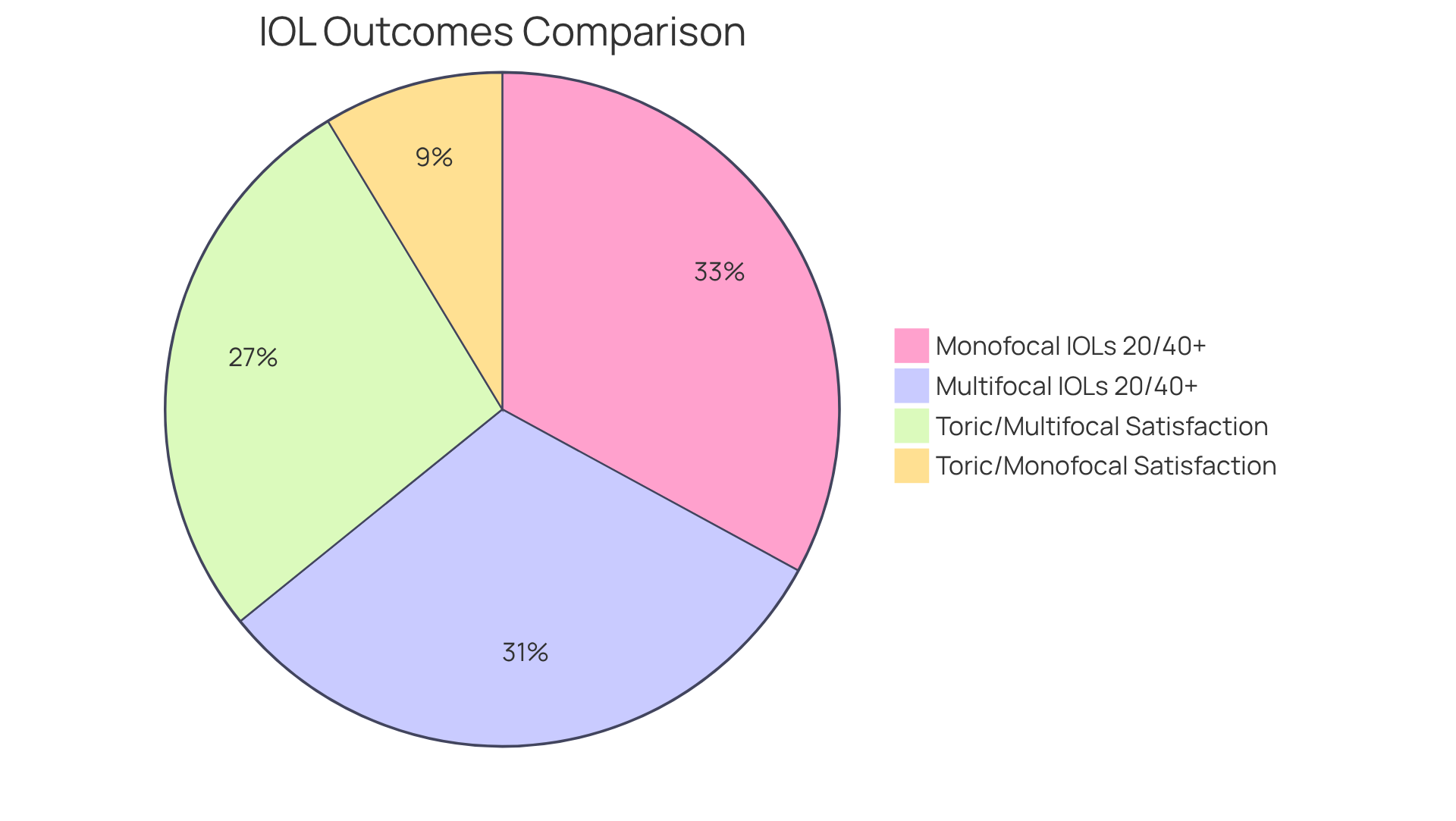
Non-Surgical Management: Options for Early Cataract Symptoms
If you are noticing early signs of , we understand how concerning that can be. There are available that involve simple lifestyle changes, such as improving your lighting and using anti-glare eyewear. Regular can be incredibly beneficial in monitoring the progression of lens opacities, and you might want to explore potential , which could offer future alternatives to surgery.
At Northwest Eye, we prioritize , ensuring that you fully understand your unique . One exciting possibility is the that include the innovative . This remarkable lens allows for after surgery, providing a tailored approach to eye care that aligns with your personal lifestyle needs.
We are here to help you through this process, and we encourage you to reach out with any you may have.
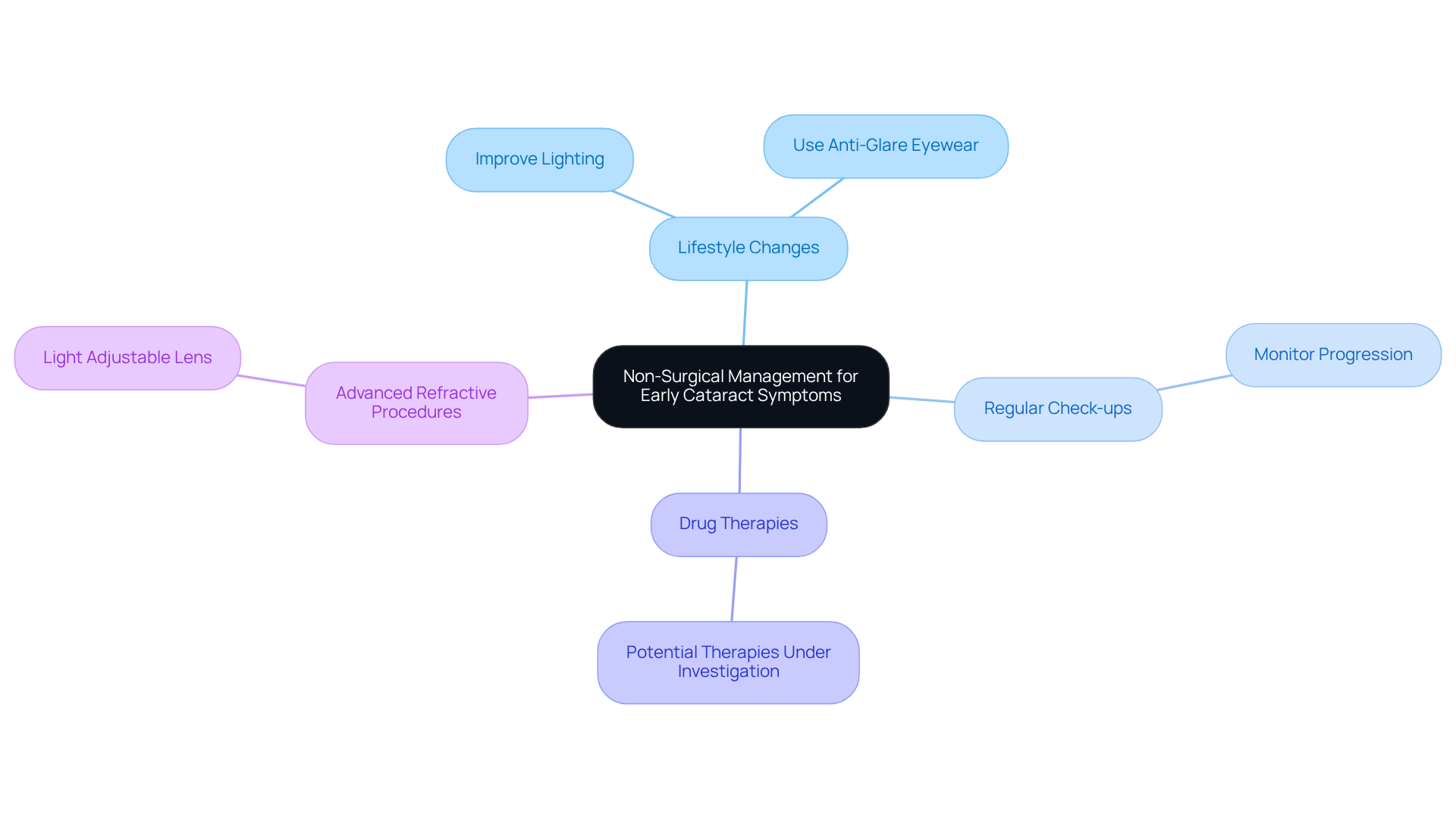
Pre-Surgery Preparation: Essential Steps for Cataract Patients
Before your cataract operation, it’s important to follow specific . We understand that this can be a stressful time, so attending a to discuss any medications and potential adjustments is essential. Additionally, please arrange for , as you won’t be able to drive yourself home afterward.
It’s common to feel , and part of your preparation involves fasting. We recommend refraining from eating or drinking after midnight before your surgery to minimize the risk of complications. Wearing comfortable attire on the day of the procedure can help ease your mind, and please avoid using makeup, fragrance, and creams.
Surgeons emphasize the importance of using in the days leading up to your surgery. This simple step can help maintain optimal eye health. By participating in these crucial preparations, you not only ready yourself physically but also improve your overall experience, leading to better results.
Despite these clear guidelines, we recognize that adherence to pre-operative instructions can sometimes be challenging. Studies show that many patients may not follow them as closely as needed, highlighting the from healthcare providers. By understanding and , you can significantly enhance your chances of a and recovery. Remember, we are here to help you through this process.
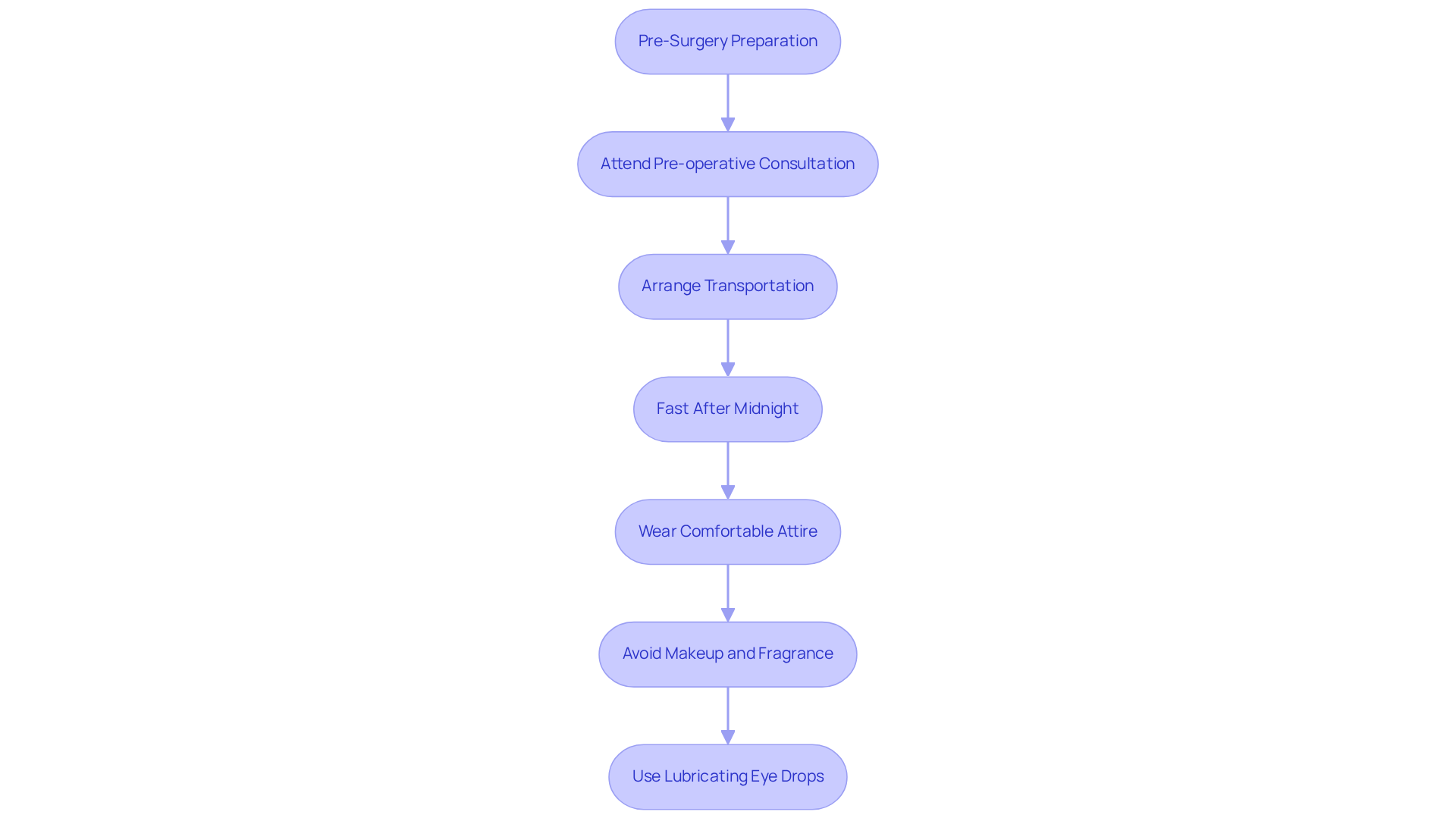
Post-Operative Care: Ensuring a Smooth Recovery After Cataract Surgery
After undergoing , especially with the advanced (LAL), it’s essential to follow your surgeon’s closely. We understand that this can feel overwhelming, but adhering to these instructions is vital for a . This includes using to prevent infection and inflammation, avoiding strenuous activities, and wearing when outdoors.
The LAL offers a unique advantage, allowing adjustments to be made after surgery. This tailored approach to cataract treatments can significantly enhance your recovery experience. Regular are crucial; they help monitor your healing process and address any concerns promptly. Many individuals report within just a few days.
In fact, a retrospective study indicates that 72.6% of individuals with cataracts achieved recovery after undergoing cataract treatments, with a median recovery time of 23 weeks. However, it’s important to be aware of . Common post-operative complications, such as inflammation and increased intraocular pressure, have been reported in about 11.55% of cases.
Patient testimonials highlight the transformative impact of cataract treatments. One individual shared their joy in restoring 20/20 vision, allowing them to enjoy cherished activities like crocheting and spending time with family. We want to ensure you have a , especially with the LAL. To support you, here are some helpful tips:
- Maintain regular follow-up visits.
- Adhere to prescribed medications.
- Communicate any unusual symptoms to your healthcare provider promptly.
Remember, we are here to help you through this process, and your journey to improved vision is supported every step of the way.
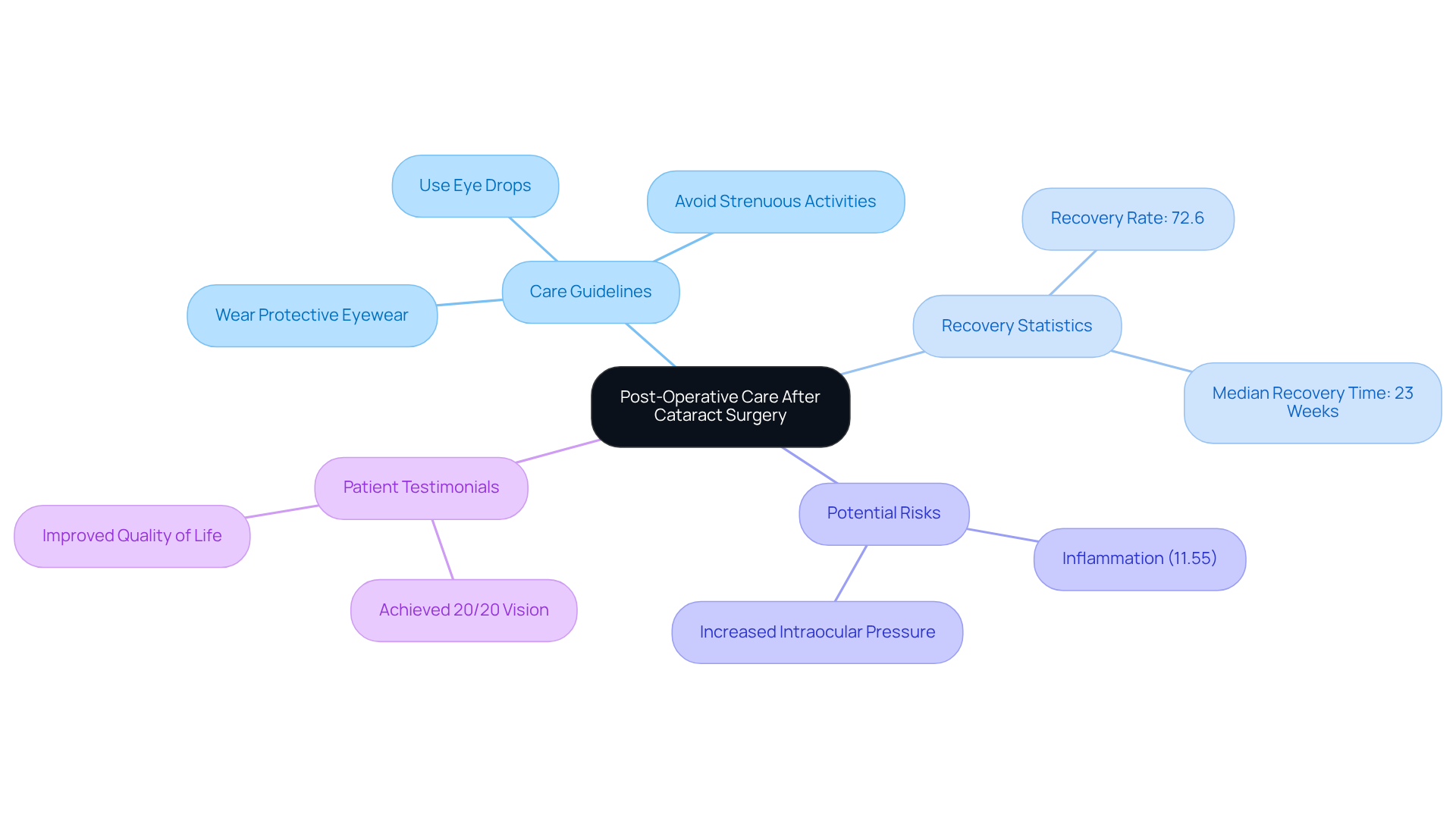
Cataract Surgery Risks: What Patients Need to Know
, such as , are often viewed as safe procedures, but it’s important for you to be aware of potential risks. These include:
- Infection, which occurs in about 0.1% of cases
- Bleeding and , with a risk of around 1 in 250 individuals
- Common complications like ongoing and visual disturbances, such as glare and halos, which can affect your quality of sight after surgery
A recent study showed that the incidence of (POE) has significantly decreased in recent years, reflecting advancements in .
Understanding these risks allows you to weigh the benefits of improved vision against possible complications associated with cataract treatments. While most patients report after cataract treatments, being aware of is crucial for making informed decisions. that recognizing risk factors, such as your age and any pre-existing ocular conditions, can help tailor surgical approaches to minimize complications.
If you notice symptoms like , it’s important to seek professional medical help, as they may indicate underlying conditions. As one specialist noted, ‘A favorable visual result is attained after lens surgery in most instances.’ By staying informed, you can engage in meaningful discussions with your healthcare providers, ensuring you feel prepared for the journey ahead.
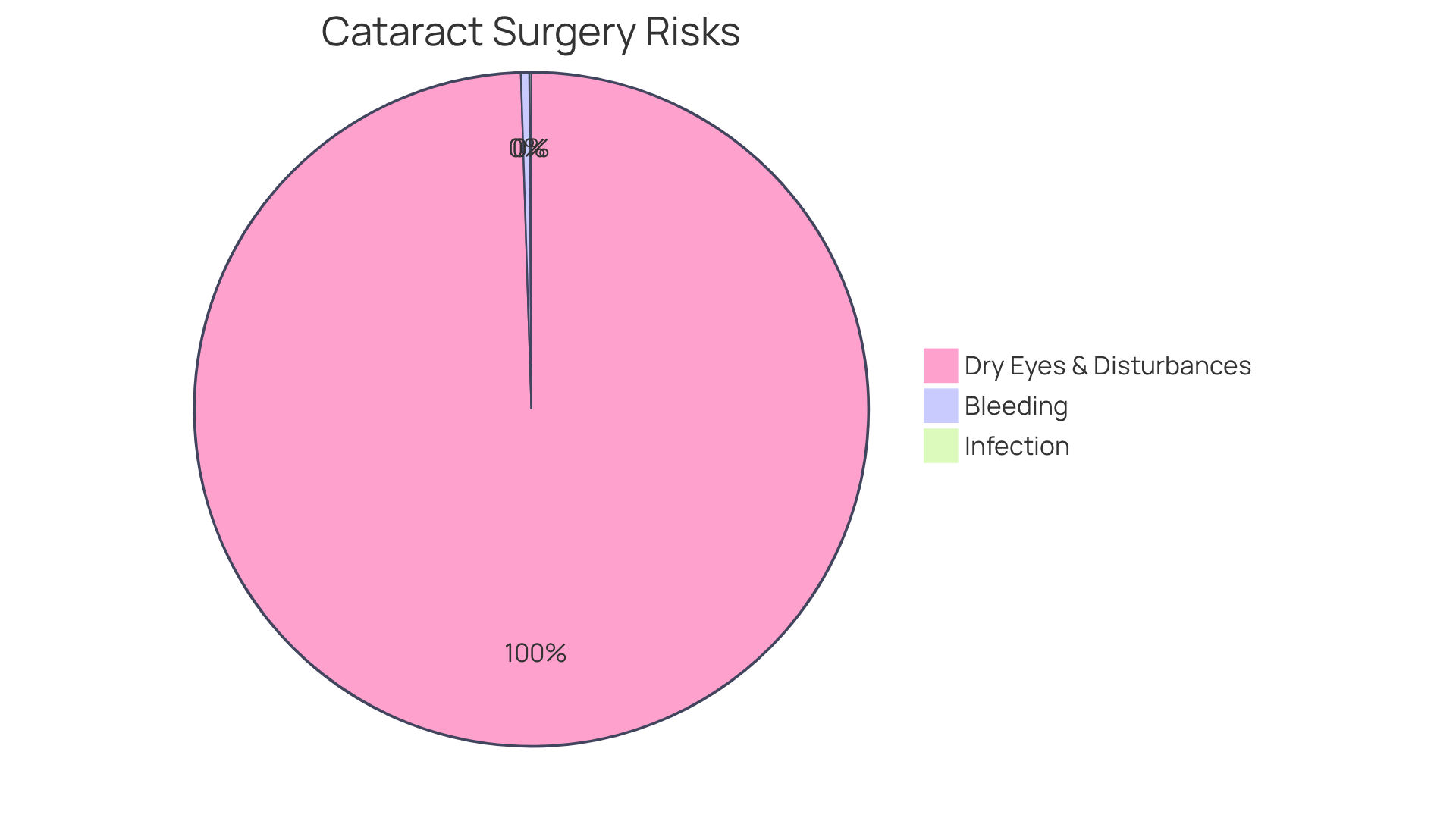
Latest Research in Cataract Treatments: Innovations and Insights
Recent advancements in are significantly transforming care for individuals. We understand that navigating these changes can feel overwhelming, but innovative technologies, such as (IOLs) like the offered at Northwest Eye, are here to help. This remarkable lens allows for personalized adjustments after surgery, which can significantly improve visual results and enhance client satisfaction.
It’s common to feel anxious about surgical procedures for cataract treatments, but studies suggest that may postpone the necessity for surgery, providing you with additional choices for managing your condition. Furthermore, advancements have also been made in surgical methods, particularly in cataract treatments. For example, enhances precision during procedures, leading to better outcomes and shorter recovery durations.
Research indicates that individuals who undergo surgery with advanced IOLs report high satisfaction rates, with many achieving . We encourage you to learn more about how the Light Adjustable Lens operates. Watching informative videos featuring can be a great way to understand this technology better.
Staying informed about these developments empowers you to . We are here to help you through this process, ensuring you receive the available.
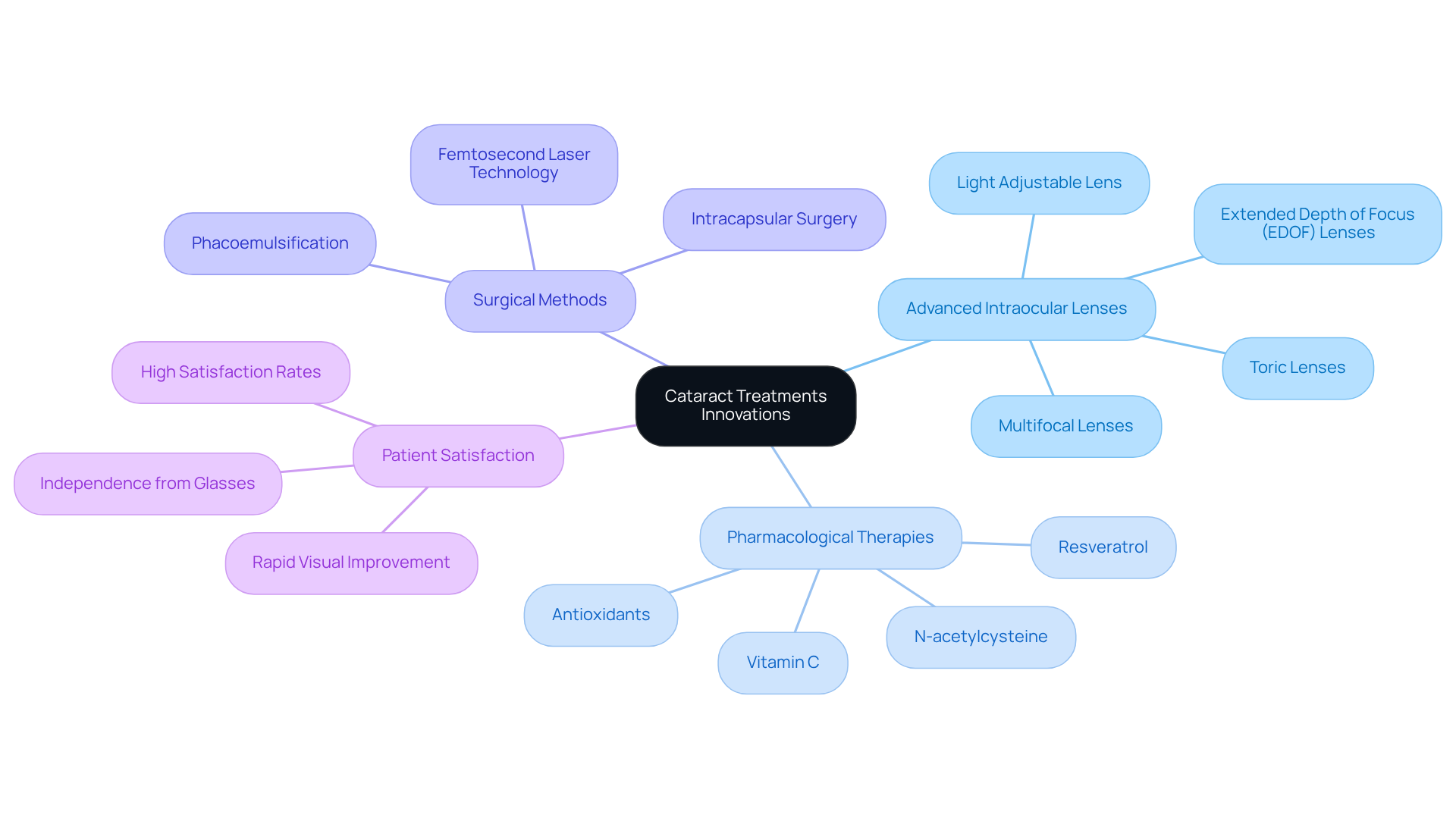
Patient Success Stories: Real Experiences with Cataract Treatments
At Northwest Eye, patients often share following their , especially those involving the innovative . One individual noted a remarkable enhancement in both vision clarity and color perception within days of the procedure, illustrating the immediate benefits of this advanced treatment. Another individual expressed heartfelt gratitude for the received throughout their journey, emphasizing how the surgery significantly improved their daily life.
We understand that can be overwhelming. That’s why specialists at Northwest Eye emphasize the importance of , such as the Light Adjustable Lens. It’s essential for you to comprehend how this technology can enhance your visual results. In fact, a study found that 92.1% of individuals reported six months after the procedure, underscoring the at Northwest Eye.
Additionally, , measured by VF-14 scores, were documented at 12 months post-surgery and sustained for up to three years. These testimonials and statistics not only demonstrate the clinic’s dedication to outstanding eye care but also highlight the significance of education and in attaining favorable results. We are here to help you through this process, ensuring you feel supported every step of the way.
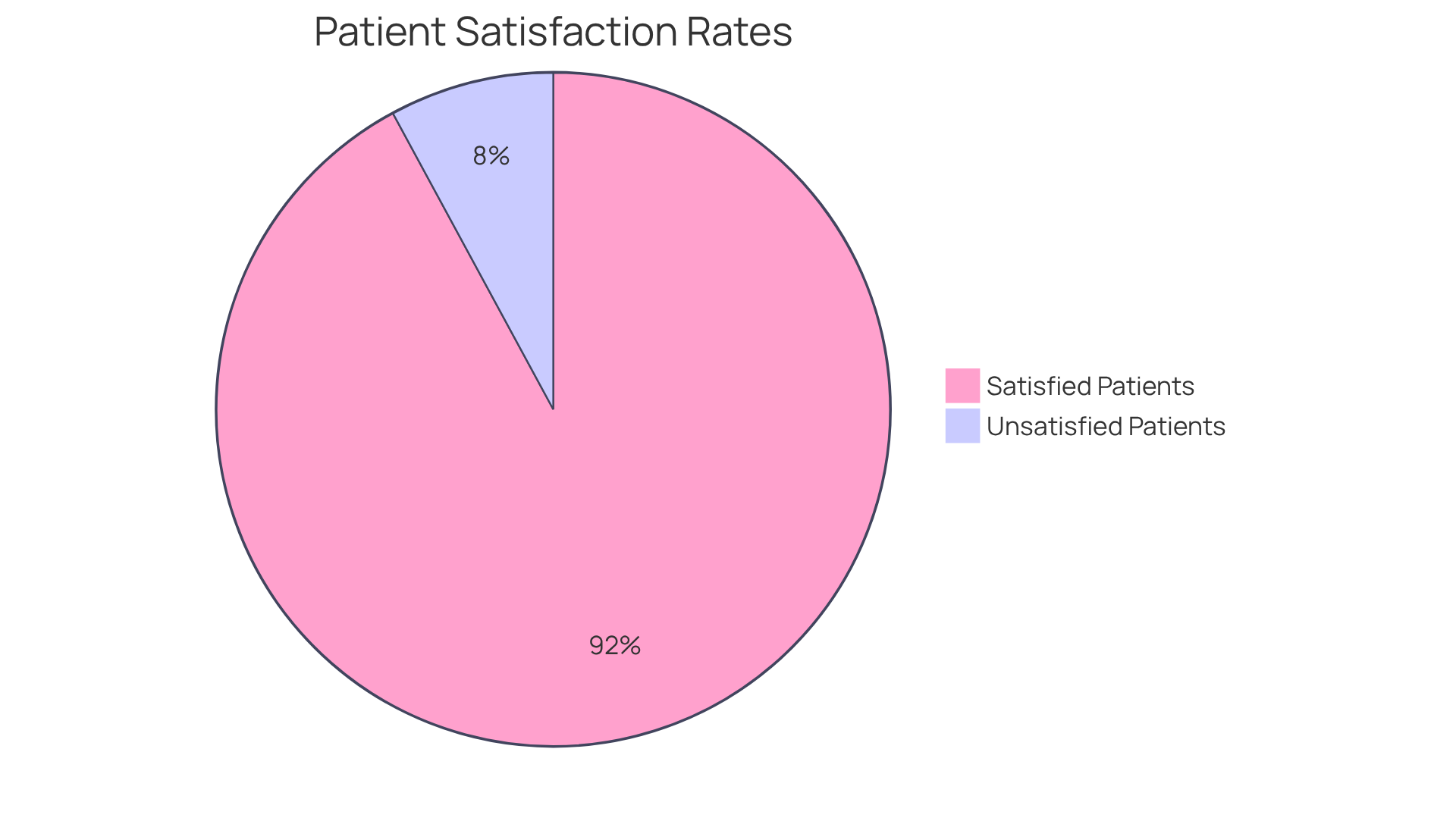
Long-Term Outlook: What to Expect After Cataract Surgery
After , many patients notice significant improvements in their sight, often achieving . We understand that some individuals may experience temporary changes in their vision during the initial healing phase; however, these variations typically stabilize within a few weeks to a few months. It’s common to feel concerned about , which can occur after surgery due to factors like:
- Diabetic retinopathy
- Uncorrected refractive errors
Ophthalmologists emphasize the importance of to and manage any potential complications. This ongoing care is crucial for ensuring optimal outcomes and addressing any emerging issues. Ultimately, you can look forward to an and in your daily activities, thanks to your improved vision.
However, we want to highlight that dropout rates for follow-up consultations can reach 50% at six weeks. This underscores the need for consistent . Remember, we are here to help you through this process, and your vision is worth the attention.
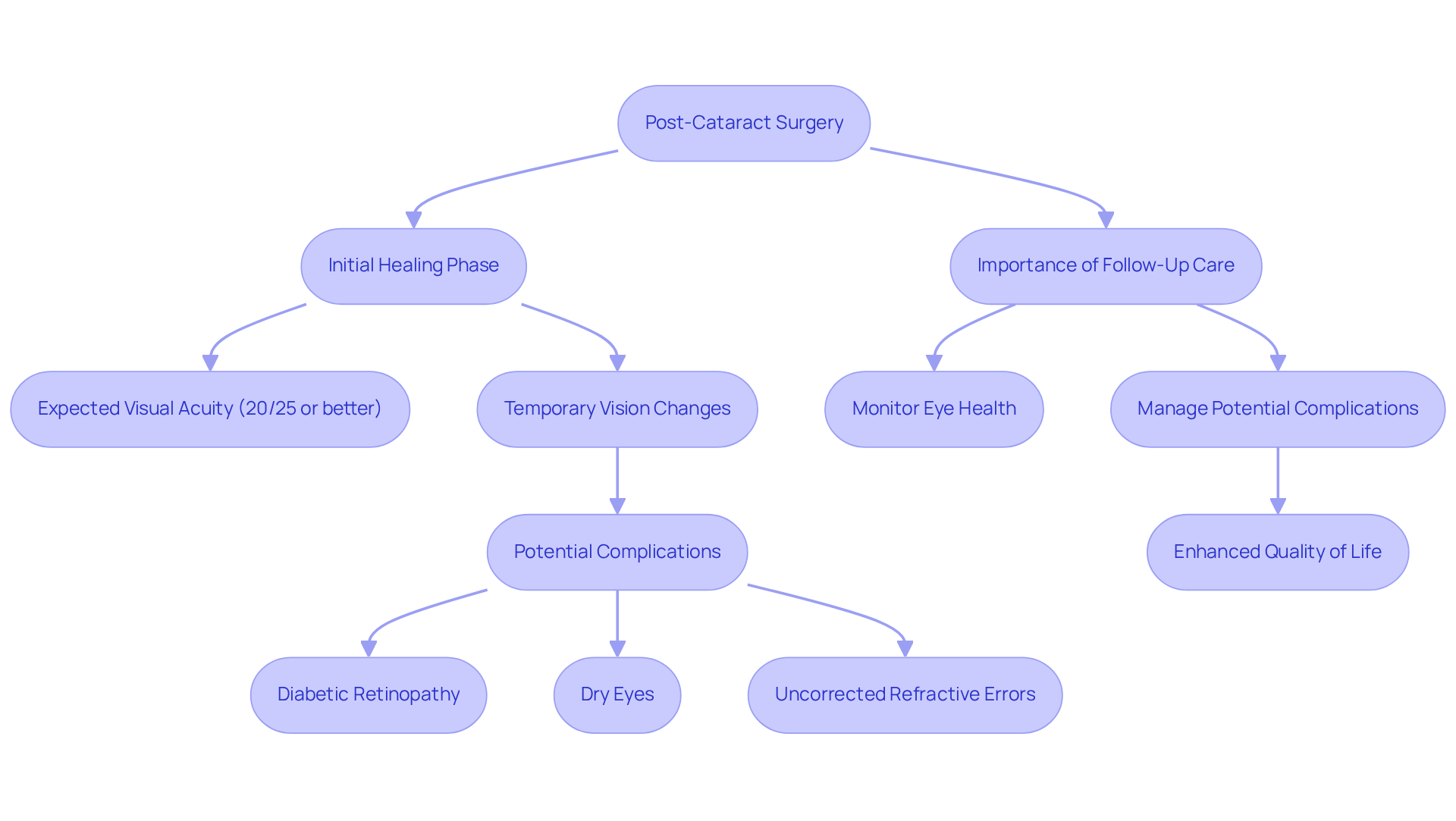
Conclusion
Embracing the journey of cataract treatment can lead to transformative changes in vision and quality of life. We understand that this process may feel daunting, but with advanced techniques such as femtosecond laser-assisted cataract surgery and innovative Light Adjustable Lenses, patients now have access to personalized care that significantly enhances their visual outcomes. The commitment of healthcare providers, like Northwest Eye, to utilizing the latest advancements ensures that each individual receives tailored treatment that meets their specific needs.
Throughout this article, we have highlighted key insights into the various aspects of cataract treatments. From understanding the benefits of premium intraocular lenses to the importance of pre-surgery preparation and post-operative care, each element plays a crucial role in ensuring a smooth recovery. Moreover, it’s common to feel concerned about potential risks, and engaging in ongoing follow-up care is essential for achieving the best possible results after surgery.
Ultimately, informed decision-making and personalized care are vital for anyone considering cataract treatment. By staying educated about the latest innovations and actively participating in the recovery process, individuals can look forward to not only improved vision but also a renewed sense of independence in their daily lives. Taking that first step toward treatment could pave the way for a brighter, clearer future. We are here to help you through this process, and together, we can achieve the best outcomes for your vision.
Frequently Asked Questions
What advanced techniques does Northwest Eye use for cataract surgery?
Northwest Eye employs state-of-the-art techniques such as femtosecond laser-assisted cataract surgery (FLACS) and Light Adjustable Lenses (LAL) to enhance surgical precision and improve visual outcomes.
How does femtosecond laser-assisted cataract surgery (FLACS) compare to conventional methods?
FLACS has a lower complication rate of 1.8% compared to 5.8% for conventional methods. It also reduces ultrasound energy usage, leads to quicker recovery times, and improves visual outcomes.
What are the benefits of Light Adjustable Lenses (LAL)?
LAL can be modified after surgery to provide customized correction, allowing for significant improvements in visual clarity. Patients with LAL are nearly twice as likely to achieve 20/20 vision without glasses compared to those with standard monofocal lenses.
How does the customization process for Light Adjustable Lenses work?
The LAL package includes advanced diagnostic testing and several light adjustment sessions, allowing patients to test their preferred focal point correction before confirming their prescription.
What types of lens options are available for cataract surgery at Northwest Eye?
Northwest Eye offers various lens options including single distance astigmatism packages, presbyopia packages, multifocal IOLs, and toric multifocal IOLs to cater to individual lifestyle needs.
What are the satisfaction rates for patients using premium intraocular lenses (IOLs)?
Studies indicate that 92% of patients with multifocal IOLs achieved uncorrected distance visual acuity of 20/40 or better six months after surgery, while 97% of those with monofocal lenses experienced similar outcomes.
How do toric multifocal IOLs benefit patients with astigmatism?
Toric multifocal IOLs improve visual acuity and provide greater independence from glasses. Research shows that 73% of individuals with toric and multifocal IOLs did not need glasses for near activities.
What support does Northwest Eye provide during the cataract treatment process?
Northwest Eye is committed to supporting patients throughout their cataract treatment journey, ensuring personalized care and addressing any questions or concerns they may have.






